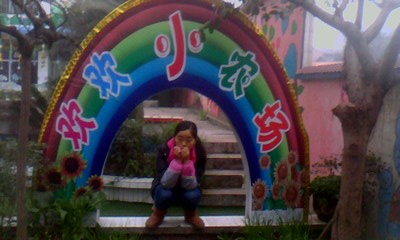Accidental discoveries
have often opened the door to beauty and wonder. The rock paintings in France
that date back 15,000 years, for example, were discovered by two boys who were
looking for shelter(避难所) from the rain. Or, the Sanxingdui Ruins(三星堆遗址), known by historians(历史学家) as the "Ninth
Wonder of the World", were discovered in Sichuan Province by a farmer.
In the spring of 1929,
Yan Qingbao, then a 43-year-old farmer, discovered a circular(圆形的) piece of jade(玉) while digging a hole.
Driven by curiosity(好奇心), he dug deeper and found a group of about 400 colorful jade
pieces. Since then, more than 10,000 relics(残片), dating back to between
5,000 and 3,000 BC have been unearthed(发掘) at Sanxingdui.
But still, only four
of the Sanxingdui Ruins' 12 square kilometers have been uncovered(开发). Who knows what other
big surprises are waiting to be shown to the world?
Sanxingdui(Chinese: 三星堆; pinyin: Sānxīngduī; literally "three stars mound") is the name of an archaeological siteand the previously unknown Bronze Age culture for which it is the type site.
Sanxingdui is now believed to be the site of a major ancient
Chinese city in what is now Sichuan, China. The Bronze Age culture which inhabited it was re-discovered in 1987 when archaeologists excavated remarkable artifacts, that radiocarbon datingdated as being from the 12th-11th centuries BCE.[1] The culture
that produced these artifacts is now known as the Sanxingdui Culture,
and archeologists are identifying it with the ancient kingdom of Shu. The artifacts are displayed in the Sanxingdui
Museum located near the city of Guanghan.[1]
The discovery at Sanxingdui, as well as
other discoveries such as the Xingan tombs
in Jiangxi, challenges the traditional narrative of Chinese civilization
spreading from the central plain of the Yellow
River, and Chinese archaeologists have began to
speak of "multiple centers of innovation jointly ancestral to Chinese
civilization."
Many Chinese archaeologists have identified the Sanxingdui
culture to be part of the ancient kingdom of Shu, linking the artefacts found at the site to its early
legendary kings.[4] References to
a Shu kingdom that can be reliably dated to such an early period in Chinese
historical records are scant (it is mentioned in Shiji and Shujing as an ally of the Zhou who defeated the Shang), but accounts of the legendary
kings of Shu may be found in local annals.[4]
According to the Chronicles of Huayang compiled in the Jin Dynasty (265–420),
the Shu kingdom was founded by Cancong (蠶叢).[5] Cancong was
described as having protruding eyes, a feature that is found in the figures of Sanxingdui.
Other eye-shaped objects were also found which might suggest worship of the
eyes. Other rulers mentioned in Chronicles of Huayang include Boguan (柏灌), Yufu (魚鳧), and Duyu (杜宇). Many of the objects are fish and bird-shaped, and these
have been suggested to be totems of Boguan and Yufu (the name Yufu actually
means fish cormorant), and the clan of Yufu
has been suggested as the one most likely to be associated with Sanxingdui.[6]
The more recent discoveries at Jinsha are
assumed to be a relocation of the Shu Kingdom, and a continuation of the
Sanxingdui Culture.[7]
All the Sanxingdui discoveries aroused scholarly interest,
but the bronzes were what excited the world. Task Rosen of the British Museum considered
them to be more outstanding than the Terracotta
Army in Xi'an. The first exhibits of Sanxingdui bronzes were held in Beijing (1987, 1990) and the Olympic
Museum in Lausanne (1993). Sanxingdui exhibits
traveled worldwide, and tickets were sold out everywhere; from the Hybary Arts
Museum in Munich (1995), the Swiss National Museumin Zurich (1996), the British Museum in London (1996), the National Museum of Denmark in Copenhagen (1997), the Solomon R. Guggenheim Museum in New York (1998), several museums in Japan (1998), the National Palace Museum in Taipei (1999), to the Asian Civilisations Museum in Singapore (2007).
Nevertheless, despite the interest in
the excavated finds, the site itself suffered from flooding and pollution, and was for this
reason included in the 1996 World Monuments Watch by the World Monuments Fund.[11] For the
preservation of the site, funding was offered by American
Express to construct a protective dike. Also, in
1997, the Sanxingdui
Museum opened near the original site.




